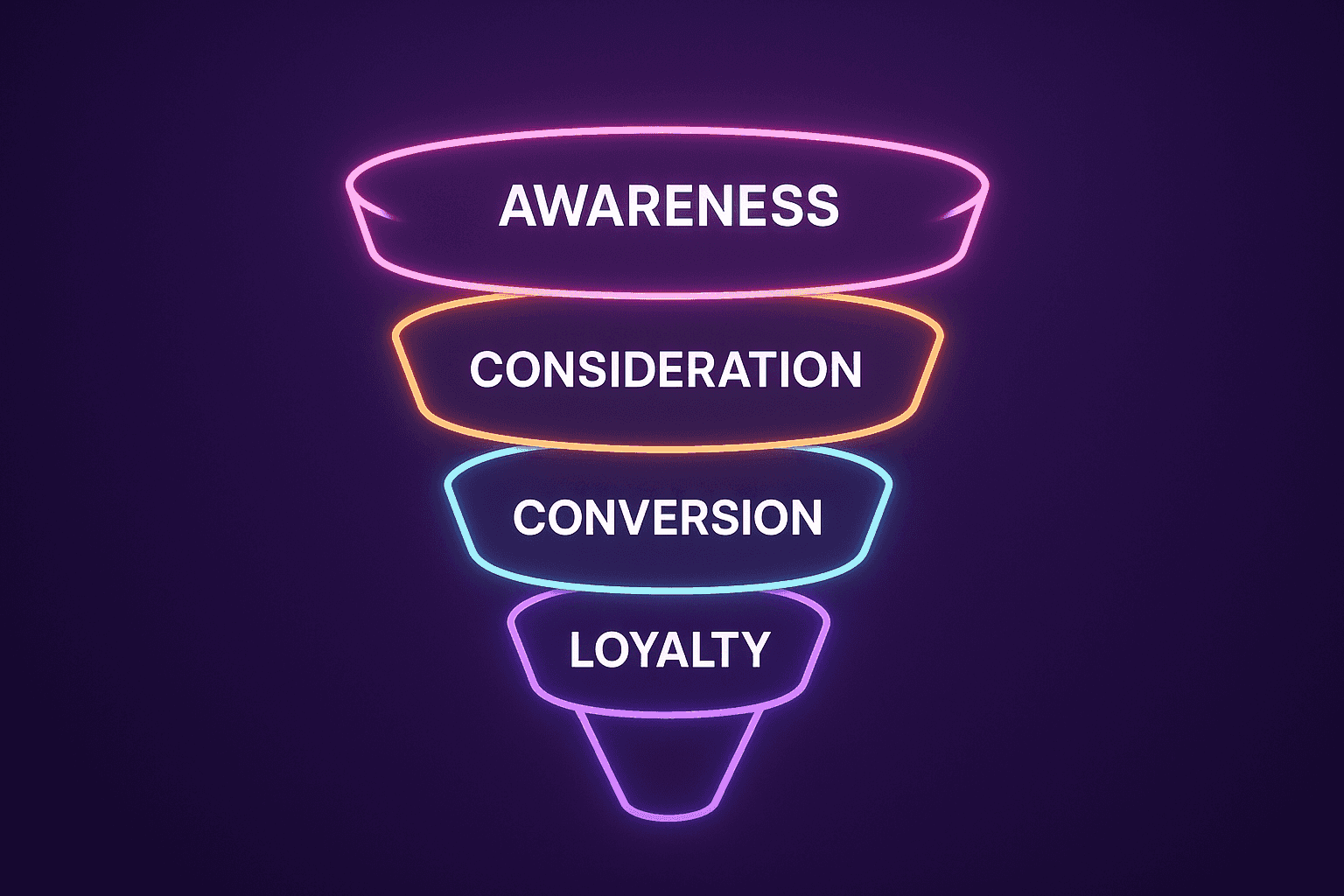Chapter 1 : Marketing Funnel
“Don’t find customers for your products, find products for your customers.”
— Seth Godin


Marketing Funnel in Digital Marketing
Introduction
Digital marketing is a powerful tool that enables businesses to connect with potential customers at various stages of their buying journey. The marketing funnel is a strategic model that visualizes this journey—from the first encounter to becoming a loyal customer. This guide provides an in-depth look at the digital marketing funnel and effective strategies to optimize each stage.
Understanding the Marketing Funnel: Turning Viewers into Loyal Customers
In today’s digital world, simply attracting attention isn’t enough. To truly grow your brand, you need to guide potential customers through a journey — from first discovering you to becoming loyal advocates. This journey is called the Marketing Funnel.
Let’s break down the four key stages — Awareness, Consideration, Conversion, and Loyalty — and see how they work together with real-life examples.
Stages of the Digital Marketing Funnel
1. Awareness: Catching the Eye
At this first stage, the goal is simple: Get noticed. You want as many people as possible to become aware of your brand. Think of it like introducing yourself at a party — you’re not asking for a favor yet, you’re just making sure people know your name.

Example: Imagine you're scrolling through Instagram and you come across a beautiful ad for Lindt Chocolate featuring a limited-edition collection. You weren’t actively looking for chocolate, but now Lindt is in your mind — that's awareness at work.
Tactics:
-
Social media ads
-
Blog posts
-
Influencer collaborations
-
SEO optimization
2. Consideration: Winning Their Interest
Now that people know you exist, it’s time to deepen their interest. In this stage, they’re considering whether your product or service is right for them. They might compare you with competitors, read reviews, or look for more information.

Example: After seeing that Lindt ad, you Google “best luxury chocolates” and find a comparison article. Lindt shows up with great reviews and tempting product photos. Now you're thinking, "Maybe I should try it?" — you're in the consideration phase.
Tactics:
-
Product comparisons
-
Customer testimonials
-
Email newsletters
-
Free trials or demos
3. Conversion: Sealing the Deal
The third stage is all about action. Conversion means the customer makes a decision — to buy, subscribe, book a call, or otherwise engage deeply with your brand.

Example: After some research, you head to Lindt's website and purchase their limited-edition chocolate gift box. That is a conversion.
Tactics:
-
Easy checkout process
-
Special discounts or limited-time offers
-
Clear and persuasive calls-to-action (CTAs)
4. Loyalty: Building a Relationship
The funnel doesn't end at the sale! Loyal customers are your best marketing assets — they buy again, leave positive reviews, and tell others about you. It’s about turning one-time buyers into lifelong fans.

Example: A month later, Lindt sends you a personalized email offering a loyalty discount and invites you to their chocolate club. You feel valued and decide to reorder — now you’re not just a customer; you're a loyal brand advocate.
Tactics:
-
Loyalty programs
-
Personalized offers
-
Thoughtful follow-up emails
-
Great customer service
Why the Funnel Matters
Every successful brand — from Lindt Chocolates to Kellogg's cereals — carefully guides customers through these funnel stages. Whether it’s introducing you to a new flavor or making you a lifelong fan of their morning cereal, the funnel isn’t just about sales; it’s about relationships.
When you understand the marketing funnel, you don't just sell. You build trust, loyalty, and a community around your brand.
Happy Marketing!